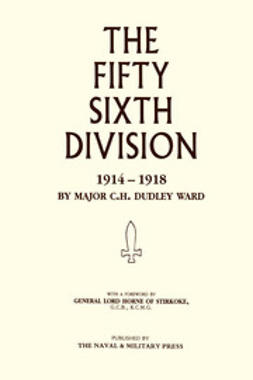Priestley, Major R. E.
Breaking the Hindenburg Line
At an hour and date to be notified later, the 46th Division, as part of a major operation, will cross the St. Quentin Canal, capture the Hindenburg Line, and advance to a position shown on the attached map A. This was the opening paragraph of the preliminary operation order which was to lead to one of the most outstanding feats of arms of the Great War, and that is where this story begins. It takes us through the planning, the opposed crossing and the subsequent divisional operations up to the armistice. How formidable the task was can be gauged from the photos of the canal; the bed was about 35 feet wide and it was like the ditch of a fortress. The approaches to the canal on the west side were covered by a continuous line of trenches, sited on a slight rise, with frequent strongpoints housing machine-guns, protected by a broad belt of barbed wire. Under the cover of a favourable mist and one of the finest barrages ever seen (fired without registration) the 46th Division stormed the enemy forward positions with few casualties and pushed on to make the crossing. The Riqueval bridge was still intact and it was secured by a party of N Staffs and sappers who rushed it, killing all the demolition party, who had been sheltering from the barrage, before they could reach it. The bridge still stands today, just as it was when captured. This is an absorbing account of an operation that went literally according to plan and from there the division went from one success to another as the story unfolds. The earlier history of the division is only briefly covered in an introductory chapter. It was the first complete TF division to arrive on the Western Front, in February 1915. Its first major battle was an attack on the Hohenzollern Redoubt at the end of the Loos offensive in which it suffered over 3,800 casualties in two days. Its attack on Gommecourt on 1st July 1916 was a failure that cost some 2,500 casualties; it also cost the divisional commander (Montagu-Stuart-Wortley). his job It wasn’t until the last few weeks of the war that the 46th Division really made its mark. In that time it encountered and defeated sixteen German divisions at a cost of 4,200 casualties. Total casualties throughout the war amounted to 29,569 and six VCs were won. The divisional sign was a rectangle surrounded by a white edge; the top half of the rectangle was scarlet and the lower half rifle green, the colours of the KRRC, the first GOC’s regiment.
Nyckelord: history, historical, war, warfare, first world war, world war one, wwi, world war 1, ww1
- Författare
- Priestley, Major R. E.
- Utgivare
- Andrews UK
- Utgivningsår
- 2012
- Språk
- en
- Utgåva
- 2
- Sidantal
- 211 sidor
- Kategori
- Historia
- Format
- E-bok
- eISBN (PDF)
- 9781781507391
- Tryckt ISBN
- 9781843422662











